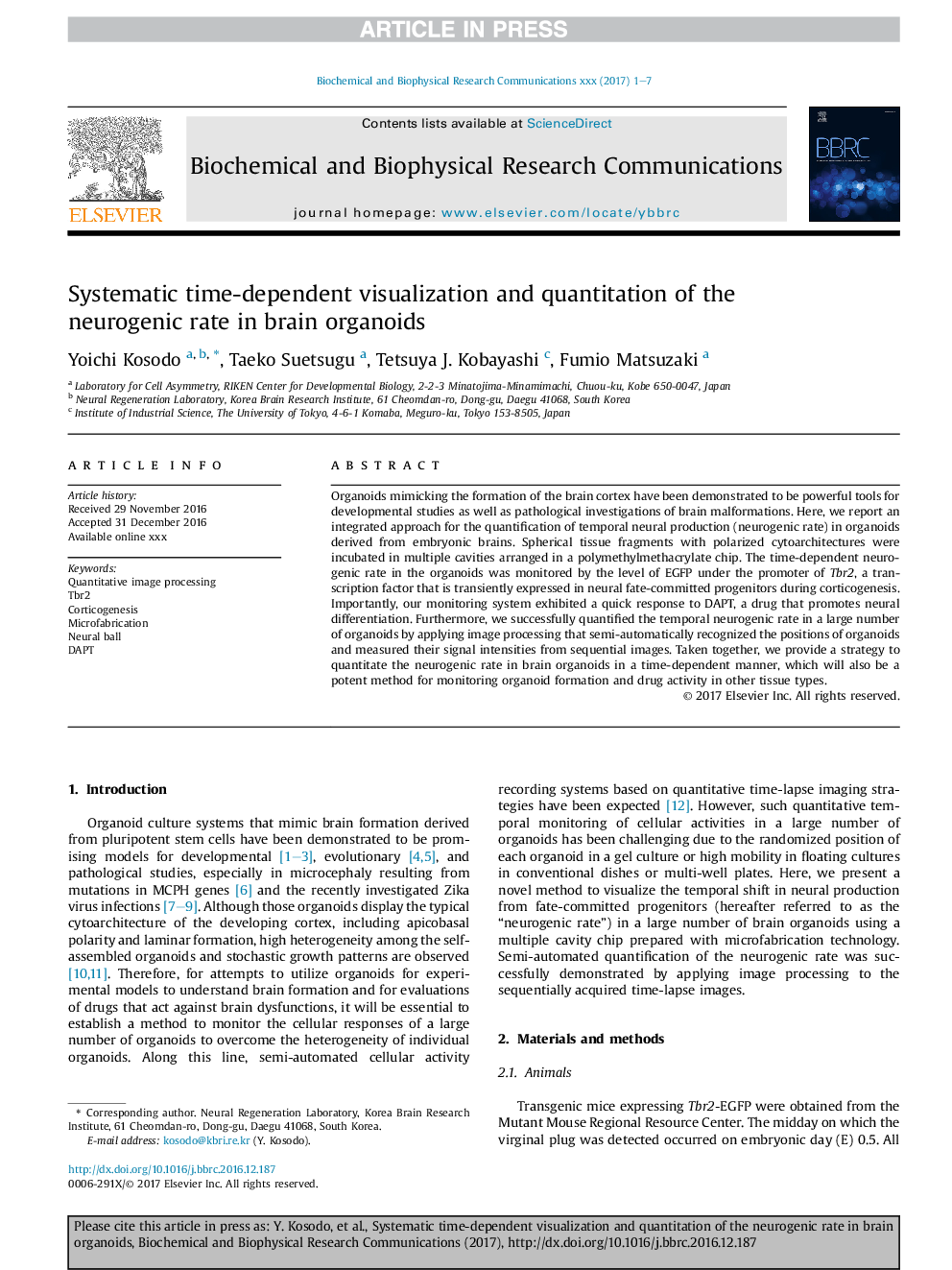| Article ID | Journal | Published Year | Pages | File Type |
|---|---|---|---|---|
| 5505561 | Biochemical and Biophysical Research Communications | 2017 | 7 Pages |
Abstract
Organoids mimicking the formation of the brain cortex have been demonstrated to be powerful tools for developmental studies as well as pathological investigations of brain malformations. Here, we report an integrated approach for the quantification of temporal neural production (neurogenic rate) in organoids derived from embryonic brains. Spherical tissue fragments with polarized cytoarchitectures were incubated in multiple cavities arranged in a polymethylmethacrylate chip. The time-dependent neurogenic rate in the organoids was monitored by the level of EGFP under the promoter of Tbr2, a transcription factor that is transiently expressed in neural fate-committed progenitors during corticogenesis. Importantly, our monitoring system exhibited a quick response to DAPT, a drug that promotes neural differentiation. Furthermore, we successfully quantified the temporal neurogenic rate in a large number of organoids by applying image processing that semi-automatically recognized the positions of organoids and measured their signal intensities from sequential images. Taken together, we provide a strategy to quantitate the neurogenic rate in brain organoids in a time-dependent manner, which will also be a potent method for monitoring organoid formation and drug activity in other tissue types.
Related Topics
Life Sciences
Biochemistry, Genetics and Molecular Biology
Biochemistry
Authors
Yoichi Kosodo, Taeko Suetsugu, Tetsuya J. Kobayashi, Fumio Matsuzaki,
